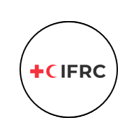Typhoon Rai, locally named Odette, hit the Philippines on 16 December 2021, ravaging islands and coastal communities in the east and flooding towns and cities across the country. Philippine Red Cross emergency teams mobilized immediately to provide vital humanitarian assistance, reporting widespread devastation to homes and livelihoods. Through this Emergency Appeal, the IFRC supports the Philippine Red Cross to deliver longer-term recovery efforts for an estimated 400,000 people.
The IFRC’s Shelter Cluster coordination team, consisting of a Cluster Coordinator and an Information Management Officer, provided in-country support in response to Typhoon Rai/Odette to more than 20 partners, with coordination structures being set up at the sub-national level. The Department of Human Settlement and Urban Development were co-leading the Shelter Cluster. 510’s Heleen Elenbaas was deployed on the 28th de diciembre de 2021 como coordinador del Grupo de Refugio IM hasta el 12th de marzo de 2022. Aquí se aseguró de que se utilizaran productos, procesos, sistemas y herramientas de información pertinentes, oportunos y precisos para permitir una coordinación basada en pruebas:
- Coordinarse con los socios del cluster
- Recopilar y analizar estos datos para evitar lagunas y duplicaciones.
- Preparar productos informativos
- Coordinarse con la OCAH y otros grupos para permitir el análisis de datos entre grupos.
Resumen de la organización
Para garantizar una coordinación eficaz de las respuestas de emergencia, se creó el sistema de grupos temáticos de la ONU. Los 11 clusters cubren los diferentes asuntos que tienen una agencia líder estándar. En el caso de los refugios (catástrofes naturales), se trata de la FICR.

Sistema de grupos temáticos de la UNOCHA
Para esta operación se elaboró un mapa de socios con el fin de tener una visión clara que muestre qué organización está presente en cada zona de la región afectada. Esto es importante porque facilita que cada organización sepa quién hace qué y dónde.

Mapa asociado de una de las regiones afectadass
Identificación de prioridades
Para identificar las zonas prioritarias, se elaboraron 2 mapas. Para ello se elaboró un índice de vulnerabilidad de los refugios antes de la crisis (véase abajo a la izquierda). Indicadores como la pobreza, la tipología de los edificios, la distancia a la pista del tifón y la urbanidad (si los municipios eran urbanos o rurales) se combinaron para indicar la vulnerabilidad de los refugios (siendo 1 vulnerabilidad baja y 5 vulnerabilidad alta).
También se creó un índice de gravedad de los daños (véase abajo a la derecha) que se basa en el número de edificios dañados en comparación con el número total de edificios. En este mapa, la destrucción completa de un edificio da lugar a una puntuación más alta que los edificios parcialmente dañados. (siendo 1 la gravedad de los daños baja y 5 la gravedad de los daños alta). Los resultados de los análisis se triangularon mediante una evaluación de informantes clave. Los informantes clave eran personas clave de los gobiernos municipales, las oficinas de gestión de la reducción del riesgo de catástrofes o las ONG locales. Con estos datos prácticos obtenidos sobre el terreno hasta ese momento se pudo validar la mayor parte del análisis teórico.


Mapa de vulnerabilidad de los refugios antes de la crisis Mapa de gravedad de los daños
El análisis de prioridades y carencias se elaboró conjuntamente con el Cluster Global de Refugios.
Modelo Typhoon Trigger
The German Red Cross and the Philippines Red Cross (PRC) engaged the Netherlands Red Cross/510 to lead the development of the so-called Typhoon Trigger Model, which is the mechanism to pre-assess the danger level of an incoming typhoon. Its outcomes determine whether or not an EAP will be activated. When the trigger threshold reaches 72 hours prior to landfall, the concerned PRC branches are informed of the Early Action Protocol (EAP) activation and requested to start preparation and implementation of the pre-identified early/anticipatory actions. The data used for the priority index is the same as that in the machine learning model. Typhoon Rai (Odette) was predicted only 36 hours before, because of the rapid intensification of the typhoon, which is not enough time to execute Early Actions. That’s why in this instance the EAP was not activated.
Trabajo sobre el terreno
Elenbaas traveled to 4 provinces (Southern Leyte, Bohol, Cebu and Negros Oriental ). The coastal areas were affected the most due to the storm surge that was a result of the typhoon. ‘Even concrete buildings close to the coast were badly damaged.’ Says Elenbaas. ‘And in some areas you couldn’t even see that there had ever been buildings in the first place’. In certain areas there often was no internet access (or no electricity because of the storm) and Information Management, therefore, had to be done offline. Work in the field is important because it validates data and it allows to identify what the needs are of local municipalities.

De derecha a izquierda: Sur de Leyte, Bohol, Cebú y Negros Oriental

Zona afectada en el (Ubay, norte de Bohol)
